If you’re considering getting a driving licence in the Netherlands, your first question is probably: “But how?”
And let us tell you: it’s not always simple. The answer depends on your situation. You might:
- Be able to use your home country’s driver’s licence with no need to swap
- Be able to swap your home country’s driver’s licence for a Dutch one
- Need to take lessons, a theory exam, and a practical exam (yikes!) — even if you already have a licence.
After three years of living in the Netherlands, I finally went through this process, including taking the theory exam, driving lessons, and the practical exam. I’m now the proud owner of my very own Dutch licence!
So how can you skip the bike and hit the roads like a driving Dutchie? Here’s the ultimate guide to getting your Dutch driver’s licence.
🙋♀️ Who can get a Dutch driving licence?
In the Netherlands, from 16.5 years old, teenagers can begin taking driver’s lessons. Anyone aged 17 or older can take the Dutch practical driving exam. A basic car licence lets people hit the road in either a car, moped, or high-powered e-bike (speed pedelec).
Naturally, if you’ve moved to the Netherlands as an international, it’s likely that you’ve already gone through the rite of passage of getting your driving licence in your home country.
Here’s the thing: even if you’ve been driving for 30 years, the Netherlands only allows some people to directly switch their foreign license. Whether you can depends on the license your country is from and, sometimes, your visa.
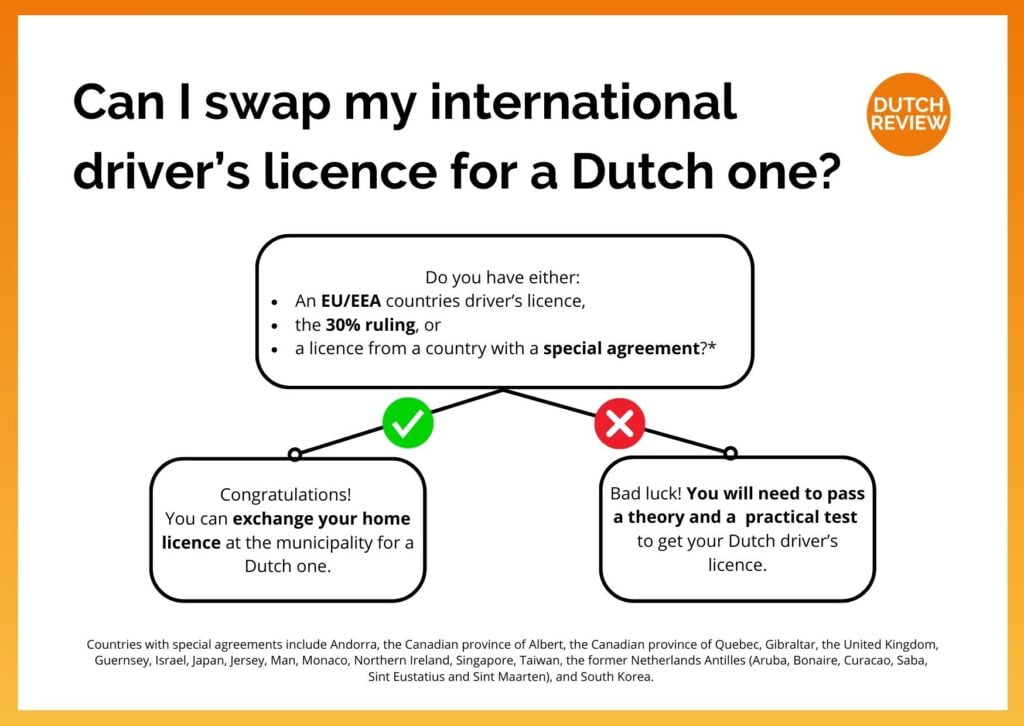
Members of EU/EEA countries
Are you the holder of a lucky EU or EEA state driving licence that was issued before you registered in the Netherlands? Then congratulations: you can use your current licence to drive in the Netherlands — at least for a while.
Once your licence has expired or needs to be reissued, you must apply for the switch at your local Dutch gemeente (municipality), where you’ll be issued a shiny new licence complete with the Dutch language. The driving licence category on your EU/EEA license must match the vehicle you intend to drive in the Netherlands.
Need a reminder of those EU/EEA countries? Here you go:
EU: Austria, Belgium, Bulgaria, Croatia, Republic of Cyprus, Czechia, Denmark, Germany, Estonia, Finland, France, Greece, Hungary, Ireland, Italy, Latvia, Lithuania, Luxembourg, Malta, Netherlands, Poland, Portugal, Romania, Slovenia, Slovakia, Spain and Sweden.
EEA: Iceland, Liechtenstein, Norway and Switzerland.
People who can swap their driver’s licence in the Netherlands
Not a holder of an EU/EEA country driving licence? No problem, it’s possible you’re still eligible to swap your licence to a Dutch one without having to take the theory and practical exam — but only if you fall into two main categories:
Under the 30% ruling
Do you have the 30% ruling for highly skilled migrants? Then congrats! Your visa and tax status grant you a huge benefit: the ability to switch your home country’s driving licence to a Dutch one.
Try to do this within 185 days of registering in the Netherlands. Just apply at your local municipality, they’ll take your foreign licence, and you’ll be issued a nice Dutch card instead. Makkelijk! (Easy!)
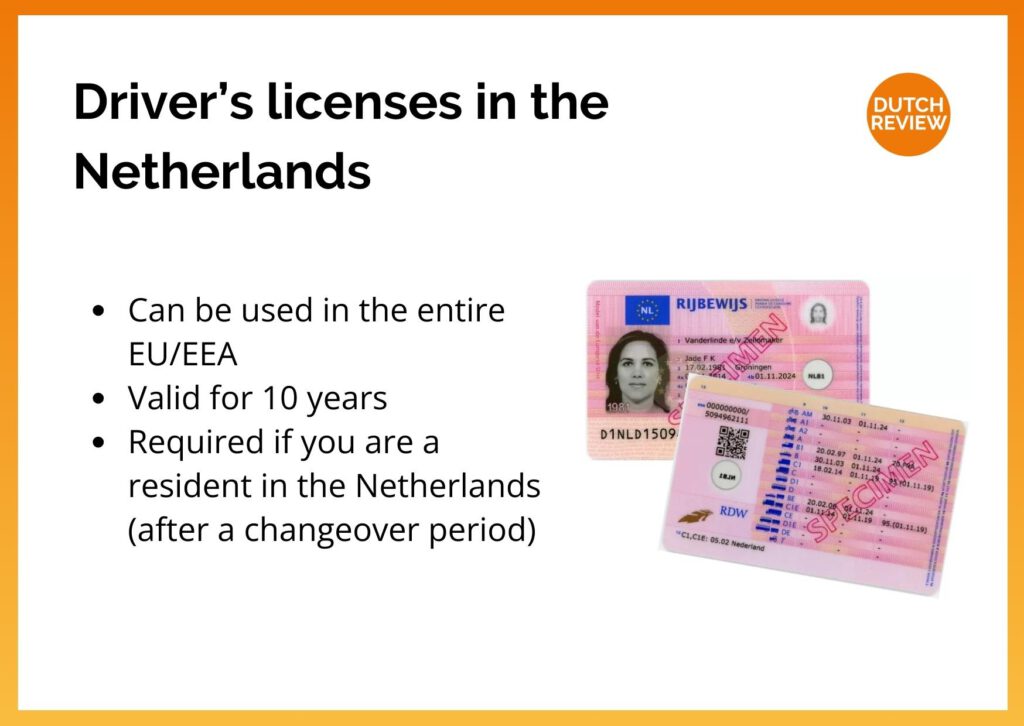
After 185 days, your foreign driving licence is no longer valid, and you won’t legally be allowed to drive on Dutch roads until you formally make the switch.
Even better than this cosy 30% ruling benefit is that if you have a partner who came to the Netherlands with you, they get the same advantage. Leuk!
Eligible individuals will receive a new driving licence after the swap process.
Special inter-country driver’s licence agreements
In some ultra-special cases, the Netherlands has signed agreements with other countries or regions that agree that they think their citizens drive pretty well.
These places are Andorra, the Canadian province of Albert, the Canadian province of Quebec, Gibraltar, the United Kingdom, Guernsey, Israel, Japan, Jersey, Man, Monaco, Northern Ireland, Singapore, Taiwan, the former Netherlands Antilles (Aruba, Bonaire, Curacao, Saba, Sint Eustatius and Sint Maarten), and South Korea.
If you hold a foreign driving licence from one of the above places, you’ve won the jackpot and can exchange your home licence for a Dutch driving licence. Woo-hoo!

How to exchange your licence
If you’re one of the lucky ones above who can exchange their driver’s licence, what you need to do is pretty easy.
Head to your local municipality (where you’re registered) with the following documents:
A colour passport photo
Your valid foreign driving licence
Your 30% ruling notification from the Belastingdienst (if applicable)
Your passport
Your Dutch residence permit and (if applicable) 30% ruling statement
A completed Health Declaration from the CBR (you’ll need to do this in advance)
Request to exchange your foreign driver’s licence and fill in the appropriate form
Your municipality will send the documents to the Dutch licence authority, the RDW
If approved, you’ll receive a letter within 10 days advising when to collect your licence from the municipality
Some municipalities also allow you to start the exchange process for your driving license online. Check with your municipality to see if this option is available in your area.
Let op! Your home country’s driver’s licence will be returned to the country that issued it — so kiss it goodbye (unless you want to take the Dutch tests!) 😘
People who need to pass the Dutch driver’s licence tests
Uh-oh — if you’ve read this far, that means you’re not in one of the exemption categories above.
Perhaps you’re from Australia, South Africa, India, New Zealand, or one of the other many countries that didn’t make the list?
Here’s where we’re the bearer of bad news. If you:
- do not have a licence from an EU/EEA country,
- don’t have the 30% ruling,
- and don’t have a licence from a specially-exempted country above,
you cannot exchange your driver’s license in the Netherlands. Instead, you’ll need to pass your theory and practical driver test and will likely need to take lessons to do so.
The good news? Getting your Dutch driver’s licence is very achievable! In fact, this Australian writer did just that.
Been driving for years? I can personally recommend the Arrive and Drive program from LesDirect. This unique English-taught course is designed for expats to quickly and easily get their Dutch driver’s licence from theory to the practical test — in as little as one week. Find out more.
The other good news? (Yes, there’s more!). You can likely drive on your home licence for 185 days after registering in the Netherlands.
Take our advice: these 185 days are a great time to practise on Dutch roads and start the process of getting your Dutch driver’s licence.
Driving in the Netherlands as a tourist
Not registered in the Netherlands because you’re only in the country to gaze at canal houses, wander through tulip fields, or chow down on cheese?
If you’re not living in the Netherlands, you can drive on your foreign licence. If your licence isn’t issued by an EU/EFTA country, then your licence needs to have categories on it: A, B, C, D, E.
If it doesn’t have these categories, it’s highly recommended to get an international driving permit from your home country to use with your licence before you visit the Dutch.
🪪 How to get your Dutch driver’s licence
Alright — you’ve drawn the short straw and can’t switch your home country’s driver’s licence. Or, perhaps you’ve never had a driver’s licence.
Either way, to drive on Dutch roads, you need to get a Dutch driver’s licence. While the process is a little time-consuming and can be expensive, there are some tips and tricks to make it faster and easier.
Here’s how to get your Dutch driver’s licence in six easy steps.
1. Find a driving school
Hear us out: even if you’ve been driving for years, you almost definitely need Dutch driving lessons.
It’s one of the cold, hard truths of the Netherlands. The country is known as being one of the hardest countries in the world to get a driver’s licence.
In fact, the average Dutchie has to take 43 hours of professional driving lessons before getting their licence.
Luckily, you’re not an average Dutchie. 🍀
If you’ve been driving for years, you shouldn’t need 43 hours, but you will need more time than you might expect. Driving in the Netherlands is just different: there are priority and non-priority roads, turbo-roundabouts, and millions of bikes.
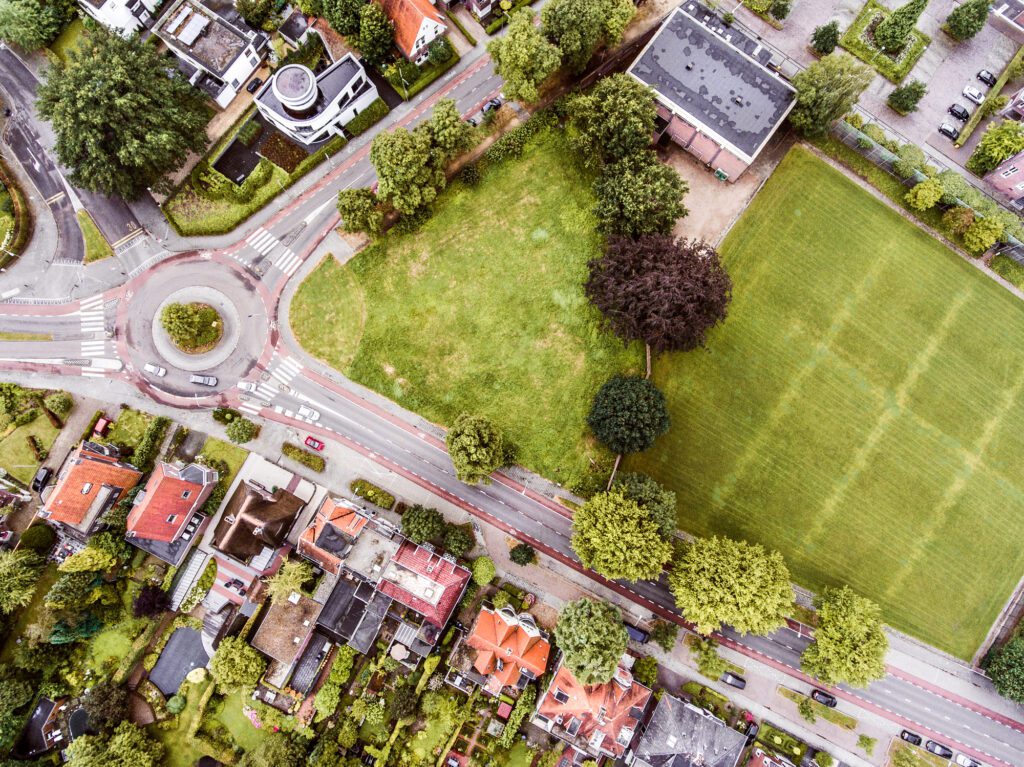
The extensive Dutch road infrastructure takes a lot of getting used to, and it takes some time to develop awareness of the other road users. You’ll need to flex those neck muscles!
Plus, in the Netherlands, only licenced driving instructors can give unlicensed drivers lessons — there’s no Learner’s Permit. That means you need to sign up with a driving school.
But not all driver’s schools are created equal. Many internationals have reported being squeezed for far too many unneeded lessons, unscrupulous instructors, or instructors who have difficulties with English.
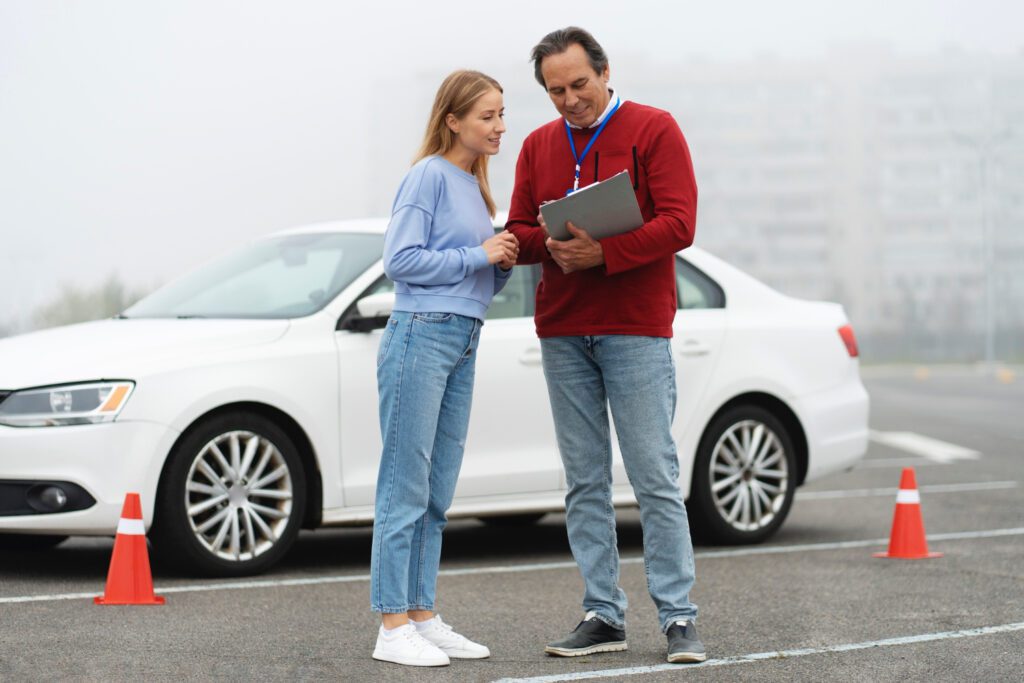
Take your time to select a good driving school with great reviews and a high exam pass rate. Even if the price is a little bit higher, it’s often worth it. As the Dutch say, “Cheap is expensive” (Goedkoop is duurkoop).
Once you’ve chosen your school, they’ll take on the task of booking your exams and will do everything they can to prepare you for Dutch roads.
Driving schools will also help you prepare for the practical and theoretical tests required to obtain your Dutch driver’s licence.
Want to get your Dutch driver’s licence fast? With Arrive and Drive, you can get your licence ultra-fast, even with the long waiting lists for practical exams! LesDirect’s English-speaking instructors watch constantly for new appointment openings so they can help expats get on the road fast. See the course.
2. Prepare for and pass the Dutch driver’s licence theory exam
Passing the driving theory test is a prerequisite for scheduling your practical test — so there’s no skipping this step or leaving it for later.
But here’s a fun fact: over 50% of test-takers fail their theory exam on the first attempt.
Alright, maybe it’s not so fun. The Dutch driver’s licence theory exam is heralded as one of the hardest in the world and is made up of three parts:
‼️ Let op: The theory exam will change format from April 7, 2025. See the changes.
Part one: Hazard perception
In the first part, you’ll be shown an image from the perspective of the driver in a car. You’ll have to look through the “windshield” at the situation, your speedometer, and your rearview mirror before making a decision to brake, reduce your speed, or do nothing.
The catch? You only get eight seconds per question and have to do 25 scenarios in a row. It’s intense, and it will often feel like multiple answers are correct.
Luckily, you are allowed to get 12 of the 25 questions wrong. However, this is a tricky part of the exam and requires a lot of online practice.
Part two: Traffic knowledge
Whew, made it through the stress of hazard perception? Now, you’re onto the next set of questions: traffic knowledge.
In this section, you’ll be asked 12 questions about speed limits, traffic signs, types of roads, the positioning of your car, and more. But beware! You can only get two questions wrong, and they can be tricky.
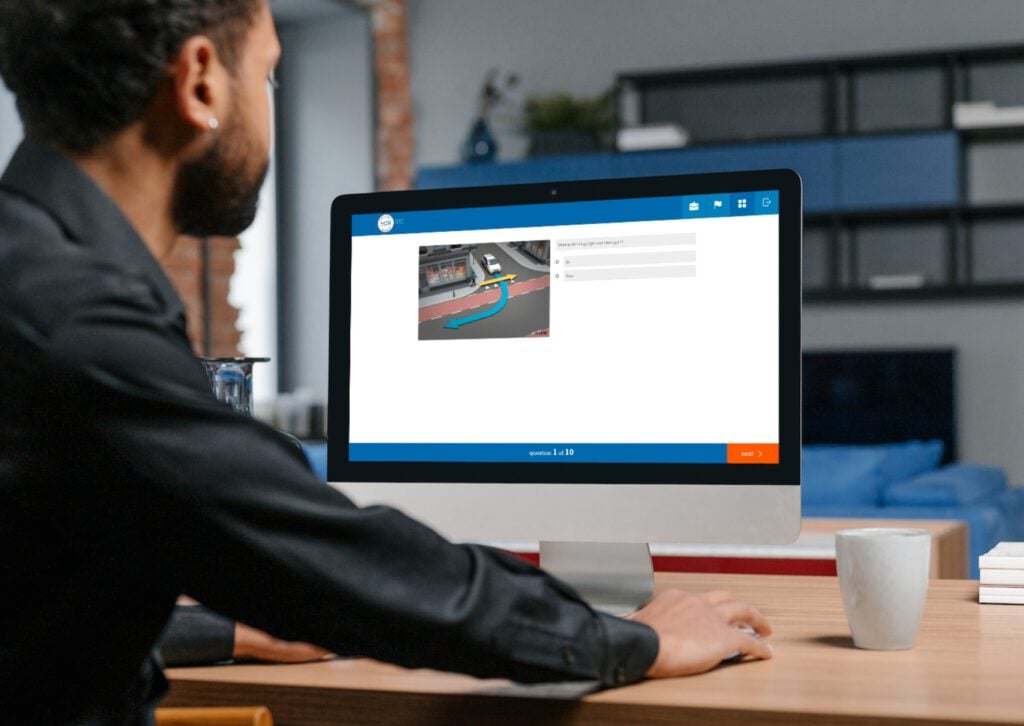
Part three: Traffic insight
Finally, the third part of the Dutch driving licence theory exam consists of applying the rules and understanding how to act. There are a massive 28 questions here, and you’ll need to answer 25 correctly.
TIP: Worried? The good news is that you can take the Dutch driver’s licence theory exam in English or with a translator if needed.
3. Submit your Health Declaration
This is an easy step on the path to getting your Dutch driver’s licence: you’ll fill in a simple questionnaire online about your health history. Expect questions about your eyesight, general health, and even psychology.
The health declaration is necessary and mandatory for all types of motor vehicles.
Once complete, the CBR will let you know if they need further information. Sometimes, you might be sent for a check-up with your huisarts or a specialist.
4. Take driving lessons
Alright, this is where it gets fun! Jump behind the wheel of a car with your instructor, and they’ll coach you on driving the Dutch way.
A lot of this involves “Het Nieuwe Rijden,” introduced in 2013, which is a more economical and environmental way of driving modern cars. It involves rolling up to stoplights, turning off your engine in certain traffic situations, and changing how you use your gears.
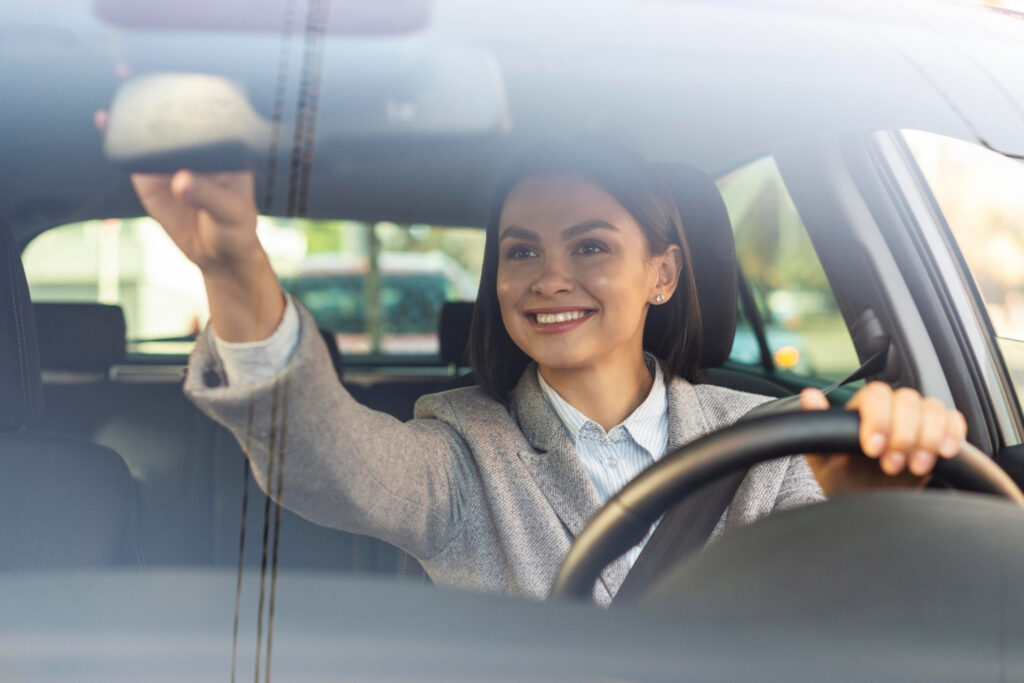
Most of all, your instructor will prepare you for both the Dutch driving exam and generally driving on Dutch roads safely. There’s more than you expect to get used to, so enjoy!
While the average Dutchie takes 43 hours of lessons, as an “experienced driver”, you’ll likely need a lot less. Expect to take at least 10 hours of driving instruction (normally completed in three to four lessons), while some internationals might need 20 hours or more.
These lessons will prepare you for the practical exam so you can get your new driving licence.
5. Pass your practical exam
Feeling confident? Strut your stuff for a CBR driving examiner. In your 30- to 40-minute practical driving test, you’ll need to:
- Prove you can drive confidently on Dutch roads
- Demonstrate awareness around traffic situations, particularly bikes and pedestrians
- Merge onto and exit off a highway
- Perform at least two special manoeuvres (like a three-point turn or reversing around a corner)
- Use a navigation program (for example, Google Maps) to direct you somewhere (this can be used in your preferred language)
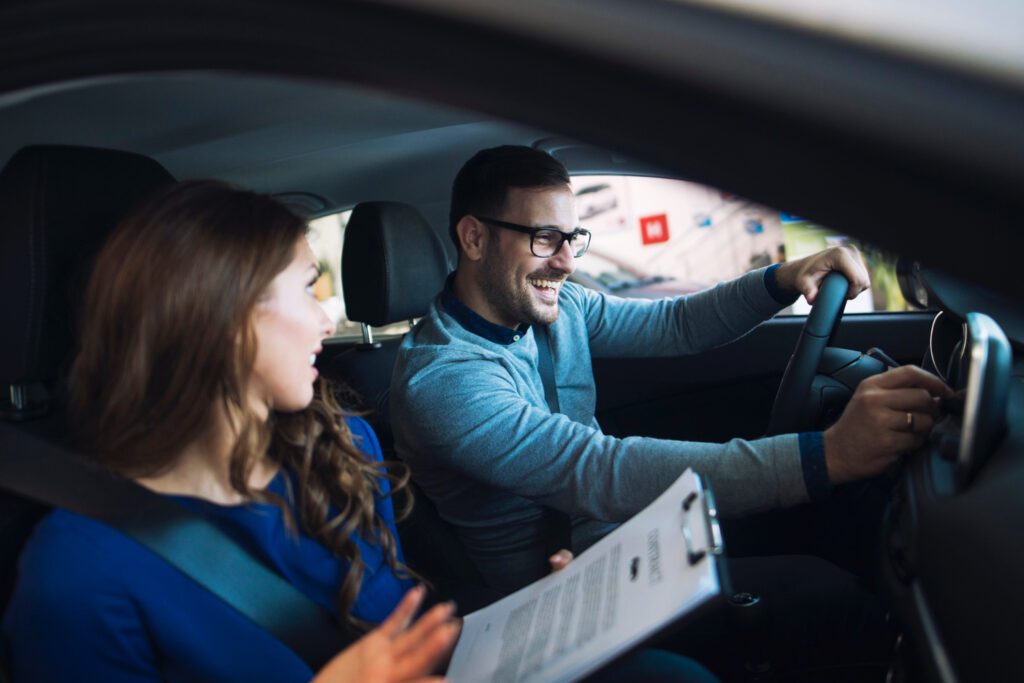
It’s important to know that you don’t have to drive perfectly, and small mistakes are okay. Did you:
- Touch the curb with your wheel while parking? All good!
- Drive five kilometres an hour over the speed limit? It happens!
- Tear through a red light because you stopped by an Amsterdam coffeeshop before your test? Um, we’ll draw a line there; that’s a fail.
The most important thing is to make your driving examiner feel comfortable letting you drive on Dutch roads. So, keep a balance between traffic flow and safety.
Tips to pass your Dutch driving exam
- Try to drive the maximum speed as much as possible (where it’s safe)
- Use the right speed when approaching all different priority junctions and traffic situations
- Change gear at the correct time and fully release the clutch before entering a bend
- Avoid using the clutch and brake pedals unnecessarily
- Maintain a balance of traffic flow and safety
TIP: Need some moral support? Your driving instructor is allowed to ride along for your test — if you wish. 😉
6. Apply for your driver’s licence
Gefeliciteerd, you passed! Your examiner gave you the go-ahead, your driving instructor gave you a huge high-five, and now you’re ready to hit the road — almost.
Before you can legally drive, you have to apply for your new driving licence, a process that takes about a week. Luckily, it’s pretty painless. You’ll need to:
Get some fresh-lookin’ passport photos taken
Take them to your local municipality (at least two hours after your exam) to request your licence who will send the information to the RDW, the Dutch licence authority
Wait about a week for your fresh Dutch driver’s licence to arrive (or pay a priority processing fee to pick up your licence within one to two days).
That’s it! You can hit the road with your wallet one card heavier and weighed down with your huge ego after passing the Dutch driver’s licence exams. You go, schat!
TIP: You can only collect your official Dutch driver’s license after you’ve been registered in the Netherlands for at least 185 days. Before that time, most internationals can drive using their foreign driver’s license for their first six months!
💰 Costs to get a Dutch driver’s licence in 2025
We’re not going to sugar-coat it — getting a Dutch driving licence can be expensive.
If you’re lucky enough to be able to swap your home country’s driver’s licence for a Dutch one, your costs will be pretty minimal — approximately €170.
If you are unable to swap your old licence for a Dutch licence, the costs begin to stack up. Expect to pay between €750 and €1500 for the exams, lessons, health declaration, and licence fees. Here’s the breakdown:
| Item | Approximate cost |
|---|---|
| English theory exam | €55 |
| Theory exam preparation materials | €40 to €125 |
| Health declaration | €45.25 |
| Driving lessons with an instructor | €650+ (Based on 10 hours of lessons at an average price of €65 to €70) |
| Practical exam | €138.50 + additional driving school fees of approximately €138.50 |
| Driver’s licence fees | €52.10 + cost of passport photos |
⏰ How long does it take to get a Dutch driver’s licence?
If you’re lucky enough to be able to switch your home country’s driver’s licence for a Dutch licence, you’ll receive the licence within a week or two.
If you can’t switch your home licence, it is possible to qualify for a Dutch driver’s licence in as little as one week after passing your theory exam. However, only if you’re very committed, have a good driving school, and have luck scheduling exams.
In general, most internationals who have previously held driver’s licences in other countries can get their licence within two months, including studying for the theory exam.
Want your Dutch driver’s licence fast? LesDirect’s unique Arrive and Drive program is specially designed for internationals who already have a driving licence in their home country. With this, you can get yourself a Dutch driver’s licence in as little as one week after passing the theory exam! See the course.
If you need to go through the whole process but have previously held a licence, most people typically allow:
Of course, you can stretch that over as long a period as you like. After passing your theory exam, the result is valid for 18 months.
🔄 Maintaining your Dutch driving licence
To keep your Dutch driving licence valid, remember these key points:
Renewal: Renew your licence every 10 years at your local municipality to avoid legal issues.
Health Declaration: Complete a Health Declaration form from the CBR during renewal to confirm you meet medical driving standards.
Update information: Report any changes in personal details, like address or name, to your municipality.
If your licence is lost or stolen: Report immediately to authorities and apply for a replacement, possibly needing a police report.
By following these steps, your Dutch driving licence will remain valid, allowing you to drive legally in the Netherlands and abroad.
🚗 Dutch driving organisations
In the Netherlands, there are two main organisations responsible for issuing driving licences and conducting driving tests: the RDW (Rijksdienst voor het Wegverkeer) and the CBR (Centraal Bureau Rijvaardigheid).
Ready to hit the road? Getting your driver’s licence in the Netherlands can be a pain, but it’s not impossible — and it’s well worth it when you’re cruising down the A2 with Snelle beats blasting.
Have you gotten your Dutch driver’s licence? Tell us your experiences in the comments below!
⁉️ Getting a Dutch driver’s licence: Frequently asked questions
How long are Dutch driver’s licences valid?
A Dutch driver’s licence is valid for 10 years from the date of issue. After this, it must be renewed at your local municipality.
Can I drive in the Netherlands on an international licence?
You can drive in the Netherlands on a non-EU/EEA international licence, but only temporarily. If your licence is recognised in the Netherlands, you have 185 days after your arrival to use it on Dutch roads.
Can foreigners get a driving licence in the Netherlands?
Yes, internationals in the Netherlands can get a Dutch driver’s licence. If they’re eligible, they may be able to swap their home country’s licence for a Dutch licence. However, ineligible internationals will have to take the Dutch theory and practical exams.
How much does it cost to get a Dutch driver’s licence?
A Dutch driver’s licence can cost anywhere from €170 if you are eligible to switch your home country licence, up to €1,500 or more if you need to take the Dutch driver’s licence exams.
How long does it take to get a driving licence in the Netherlands?
If you need to take the theory and practical Dutch driver’s licence exams, expect at least a few weeks to a few months. Special expat-oriented driving schools offer one-week programs. If you are eligible to switch your driver’s licence immediately, you can get a Dutch driver’s licence in less than a week.
How hard is the Dutch driving test?
Both the theory and the practical Dutch driving tests are considered some of the hardest in the world. However, with good preparation, training, and professional instructors, it’s very achievable to pass the exams.

What is the best book in English?
Can you tell me
How to can i Apply for the theory test
Why do they discriminate against English Canadians (not allowed to trasnsfer DL here), but if your French Canadian from Quebec it is not a possible. When I write the authorities they says yes, “that is so”…?
Can not seem to get an explain why only part of a country is allowed and not the other part of Canada?
You answered it yourself. It is what it is and whatever the reason makes no difference.
I’m from Poland, however i never did driving license in my own country, many of my friends complain about my country that is so hard to pass exams there, so many fails there. I decided to pass here in English, theory works really well in English, so you don’t have to worry about Dutch. Pratical exam from some reasons is only in Dutch, when you get nice examinator he will give you a bit english. It was so easy for me i passed everything at one time! There is only one problem, price! Cost for someone who never drive a car just almost 2000 euros, only good thing is you will drive a fancy good brand new car someties even luxury cars. In Poland you pay around 550 euros for your driving coruse, cars that they use are the cheapest KIA or some sort of Hyundai now, but is so difficult to pass.